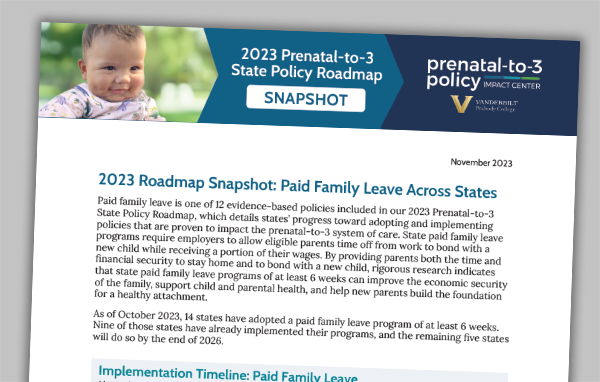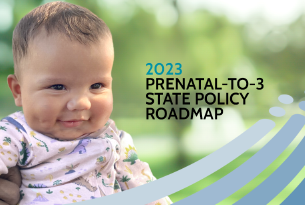Paid family leave is one of 12 evidence-based policies in our 2023 Prenatal-to-3 State Policy Roadmap, which details states’ progress toward adopting and implementing policies that effectively improve child and family wellbeing .
As of October 2023, 14 states have adopted a paid family leave program of at least 6 weeks. Nine of those states have already implemented their programs, and the remaining five states will do so by the end of 2026. States’ paid family leave programs vary depending on several policy choices that can impact take-up and equitable access.
Just this year, 34 states introduced—and several successfully enacted—legislation to establish or modify a paid family leave program. Additionally, two states that previously passed legislation began implementing programs of at least 6 weeks.
The recently updated Prenatal-to-3 State Policy Roadmap provides insight into the core policy levers and further illustrates their interplay through vivid graphics, showcasing the variation in paid family leave policies across states.





